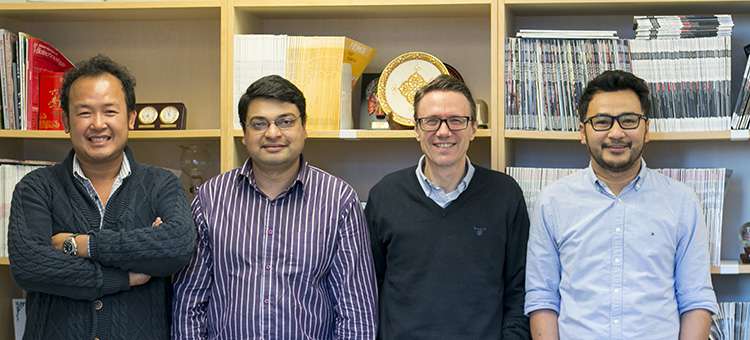Exploring vaccine safety

When a vaccine is given, there's always a risk of side-effects since it induces an immune response. The BIO-department is involved in the largest vaccine project ever, with the aim to develop new tools for monitoring vaccine safety.
Vaccines are general; the same vaccine is given to everyone. But people are individuals, and some may react to the vaccine with unwanted side-effects.
With new cutting-edge tools it might be possible to predict side-effects before they actually occur, thus giving the chance of rapid treatment. The technique could also, further down the line, give clues to make vaccine side-effects more rare and vaccines safer.
Researchers from Chalmers Department of Biology and Biological Engineering is working together with a total of 18 partners from different academic disciplines in the EU-project BioVacSafe (Biomarkers for enhanced vaccines immunosafety). Among the partners are Imperial College London, Max Planck Institute and Gothenburg University as well as world leading pharmaceutical companies.
The overall goal is to develop tools to speed up and improve the monitoring systems of vaccine safety, both before and after release to the market.
– We want to monitor patients to find side-effects before the patients have noticed them themselves, says Sakda Khoomrung, project leader at the division of Systems and Synthetic Biology.
– The project started in 2012 and has gone very well. There's potential to continue as we see good results of our work.
The Systems Biology-researchers, headed by Professor Jens Nielsen, is contributing to the BioVacSafe-project as responsible for two parts. One is to design and implement a web-based platform that will integrate different types of data, such as transcriptomics, metabolomics and clinical data. Sakda Khoomrung is working with the other part; to analyze metabolic response to the vaccines.
Serum samples have been collected from 60 patients in total. A third, 20 patients, was given the influenza vaccine Fluad, 20 was given the Yellow fever vaccine Stamaril, and 20 was given placebo. The researchers analyzed blood taken from each patient on three occasions before the vaccine (or placebo) was administrated, and a total of eight times afterwards.
The patients stayed in the hospital for a full week during the study, giving the researchers complete control over their food intake and activities. This is important since metabolomics shows the body's response to both food and other habits, such as exercise, smoking or drinking. The group was then monitored for three additional weeks after going home.
"In our preliminary results, we found that there is a metabolic response to an individual vaccine, and that this changes over time," Sakda Khoomrung says.
"Primary metabolites such as lipids and amino acids – metabolites that are involved in your basic life functions and change when you move, exercise or get sick – are particularly sensitive to changes that occur during immune responses. These metabolites could potentially be used as metabolite biomarkers, helping to improve our understanding of vaccine safety, or identifying the metabolic responses to indicate side-effects. I personally believe this is an important piece of information that will greatly help for the development of the next generation of human vaccine."
The BioVacSafe project has received funding until the end of February 2018. Sakda Khoomrung is confident the research will continue, but maybe in another form.
"It could be split up in different projects. We have shown interesting results, worth taking forward."
















